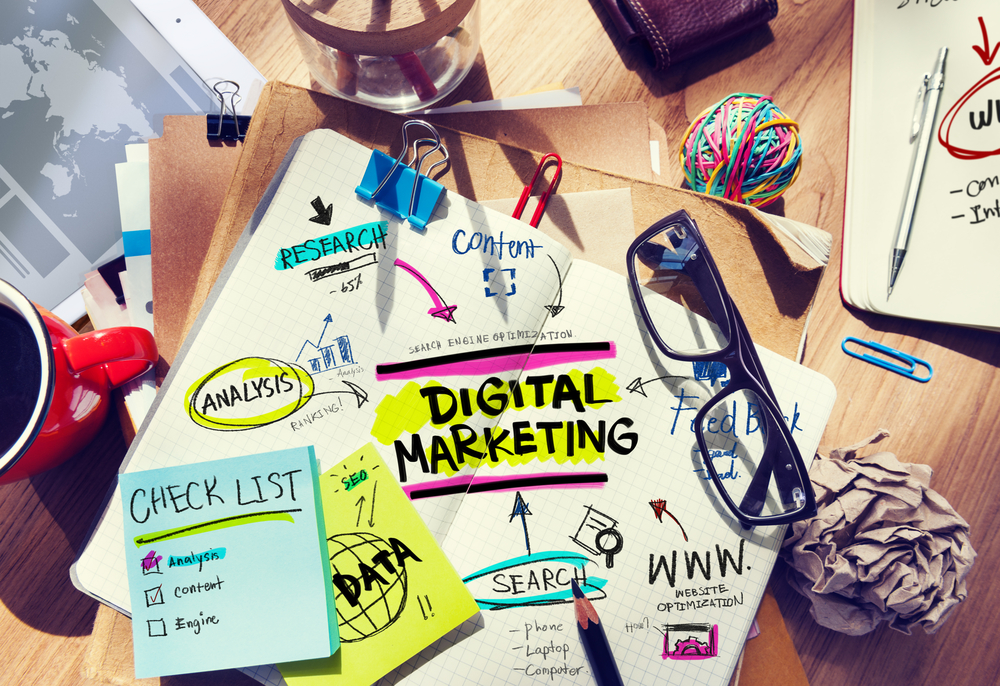Effective communication of complex concepts is a fundamental skill lawyers use daily. But we rely primarily on words, both written and spoken. 30% of the human brain is wired to process visual information. By disregarding visual communication we are missing out on the power of images to deliver quick, memorable and actionable messages.
We know that our clients are dealing with increasing speed and volume of information. Receiving 200 emails a day isn’t unusual, not to mention chat messages and social media channels. Even a really well-drafted message can easily get lost in the noise.
Great visuals can improve the chance that our message will be seen. If lawyers want to continue to have an impact in a digital world, now is the time to start building our visual literacy.
But I have no artistic ability
Don’t be too quick to conclude you can’t create a meaningful image. With our perfectionist tendencies, lawyers can be too quick to abandon anything we can’t do perfectly at the first attempt. It is frustrating when the line we draw looks nothing like the mental image we meant to reproduce.
How long have you been practicing how to write or present a persuasive sentence? 12 years of school, 5 years of university, and however many years in the workplace. What fraction of that time did you spend practicing how to present a persuasive visual image?
Be open to the possibility that you could improve by learning. You don’t have to be able to draw like an artist to convey powerful messages. You just need to use simple images and strive for clarity.
Why do lawyers need to build visual literacy now?
Visual is now
Our clients work in a world where business is increasingly being done online. Covid-19 accelerated the shift but the trend to digital-first customer engagement is looking permanent across industries. Cisco reports that 79% of all internet traffic in 2020 will be video.
What happens to the advice you write? How often is it incorporated in a slide deck so it can be communicated to the decision-makers? Is that the best use of everyone’s time?
Visual can be better
Humans can process an image instantly. We remember image and text better than text alone. Images are better at showing relationships between items and relative differences. We understand a breakdown shown in a pie chart faster than a list of numbers.
There will always be a place for words when you need to convey detailed information and precise records are required. Just don’t default to words without considering whether visuals could work better.
Visual is personal
Presenting information visually enables you to communicate your personality. Presenting information by video when you are unable to meet in person gives people a better sense of who you are. Not sure? Try posting the same content on social media like a blog and as a video (just record it on your phone). I found I got 6x more engagement on Linkedin with video, and it took a fraction of the time to prepare.
Visual requires clarity
Good visual communication requires thinking deeply about the core message you are trying to convey. We’ve all experienced death by Powerpoint with too many words or too many graphs. Finding the right image for your message requires you to know exactly what you want to say. Learning how to strip back unnecessary detail to convey a more powerful message is a skill that will help you communicate in any medium. It will help you to be confident with simplicity.
Visual requires creativity
Collaborating on a written document has to be done sequentially. A group can collaborate more easily when drawing on a whiteboard. Everyone can point and add to the concept. Working together gives opportunities to spark fresh ideas and come up with a better solution to a complex problem.
We can all do with a bit more colour in our workday. It is more fun to create a visually interesting material. Cultivating creativity helps you to come up with more original and innovative ideas.
Visual is dynamite
Imagine how your impact could change if you were regularly delighting your clients with clear, simple visuals that enabled them to quickly understand what you said, remember it and to act on it.
6 steps to building visual literacy
If you are ready to give better visual communication a try, these 6 steps can build your visual literacy.
- Learn a visual vocabulary
Like phrases you use frequently, collect your own toolkit of visual elements that you use over and over. Once you get in the habit you can quickly assemble those elements to convey your intended meaning. You need to be comfortable that you can make something that resembles a person (or a widget) before you grab the white board marker.
Mike Rhode has written about getting started with sketchnoting, or recording notes visually. He helpfully breaks down the elements he uses in this slidedeck.
- Use a framework
In Draw to win Dan Roam has written about how you can use specific visual frameworks to answer different questions – what, how, where, when, how and why. His books are a great resource on the power of using simple images to think differently and communicate powerfully.
- Use templates and brand style guide
Use templates as a springboard. Being familiar with your organisation’s brand style guide will enable quick decisions on colour palette and font selection. If you don’t have a brand style guide, putting one together will give your documents a more consistent and professional appearance.
Look out for and collect visual elements, like table styles or document layouts that work for the sort of information you work with regularly.
If you don’t have a presentation template it can be a good investment to get a graphic designer to help set some up. Use professional expertise to elevate the quality of your material but don’t delegate the entire job. The visual elements will be stronger if you bring your subject expertise and your understanding of the intended audience into the mix.
- Get familiar with visual tools
You don’t need more than a pen and paper but there are some fun online tools that can help you work visually. There are many more, but a few ideas to get you started:
| Canva | Collection of templates and design elements that enables you build striking graphic designs for presentations, handouts and social media posts. |
| Coggle | Create hierarchical structured diagrams (mind maps) for brainstorming |
| Icons | Icon collection to supplement the icons in MS Word or MS Powerpoint |
| One Note | Digital Notebook which is part of Microsoft 365 |
| Mural | Online whiteboard tool used for collaboration by remote teams |
- Have a clear objective
Be clear before you start on what action you want the audience to take. A great way to tackle a complex topic is to put the elements you need to cover on post it notes. Move them around and arrange them into a logical structure before you start work.
- What are others doing?
There are lots of great examples of how to communicate meaning with graphical elements. Digital versions of the newspapers often feature interactive data. Companies are using visual employment contracts and my favourite, a privacy policy that is a delight to read.
Getting started
If we want to have impact in the face of digital transformation, we need to be prepared to try some new things. It isn’t easy to start building new skill sets but finding small ways to incorporate into your normal routine is a good way to get comfortable working visually. It could be as simple as adding emojis to your messages or creating a meme.
Here are some ideas on opportunities to add a visual element in your day to day work:
🗒 Plan out the structure of a complex advice or transaction on the wall with post it notes
📊 Create a guide to a complex process in an infographic using Canva
🗺 Map out the steps in an Internal process as a how to guide
🔑 Make your own visual key for your daily To do list
✏ Take visual notes in a webinar or a presentation
🎥 Deliver feedback or comments on a document by screen sharing and recording your commentary in a short video
Think about how your reputation could change if you were regularly delighting your clients with clear, simple visuals that enabled them to instantly understand their options and take action. Worth giving the whiteboard marker a go isn’t it?
About the Author
Fiona McLay has been a commercial litigation lawyer for over 20 years. As a freelance lawyer, she helps financial services organisations manage regulatory investigations and resolve disputes. Fiona is also a consultant for effective incremental change in boutique law firms. You can follow her @Fionamclay or on LinkedIn

